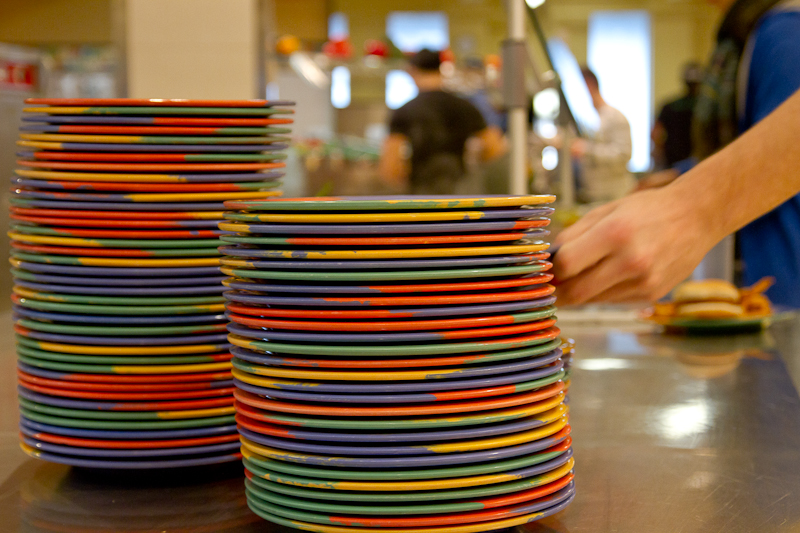
Dishes come and go at Carleton’s residence cafeteria. Approximately 100 plates a year disappear from the cafeteria, according to Dining Services’ executive chef.
While the cost to replace them is low, some might be disappearing for the wrong reason.
“There’s a bit of a myth that we include an insurance fee so [students] can take stuff,” said Carleton’s vice-president (university services) Ed Kane.
“[It] has no truth behind it whatsoever.”
He said the campus food service provider, Aramark, supplies cafeteria equipment and is responsible for replacing what goes missing.
“Aramark has to replace all the equipment that goes missing, and it’s passed on through the cost of each year’s meal plan,” he said.
Aramark executive chef John Horton said Carleton is not billed for the cost of missing cafeteria equipment.
And that cost, he said, is unsubstantial.
“I believe it’s a very small factor that’s not costing us that much money in our operation,” he said, adding that the plates cost about $1 each.
He said he believes only a small percentage of students take dishes from the cafeteria, and most of them are returned at the end of the year as students leave residence.
“I’m not saying the odd plate isn’t taken,” he said. “But on the whole they’re returned as we clean out the rooms.”
“Someone said we get charged anyway for stealing plates,” said a third-year political science student who lived in residence in his first year and wanted to remain unnamed. “Our philosophy was to get that money back.”
He said the method of smuggling was two plates at a time in a kangaroo sweater pocket.
“You’d slide a plate in there and just walk out and they wouldn’t know anything,” he said. “That’s just it.”
He said it was not done for sport, and only partly done to stock a house.
Plates are cheap, he said. Were it not for the justification that somehow they had already been charged for the stolen goods through an insurance fee, the student said he wouldn’t have done it.
“It was not out of necessity,” he said, “but to get our money back.”
Horton acknowledges that student perception, but said it isn’t true.
To curb student theft the cafeteria requires large bags and purses be checked into lockers at the door, and has installed cameras in the dining and serving areas.
Horton said the cameras are monitored regularly, but used more often in cases of students’ possessions gone missing, not the cafeteria’s.
The real culprit for missing cafeteria goods, it seems, is the garbage can.
“When students clean off their plates we saw that some [cafeteria goods] were going in,” Horton said.
“We put a magnet in our garbage pails that catch those forks and knives.”





